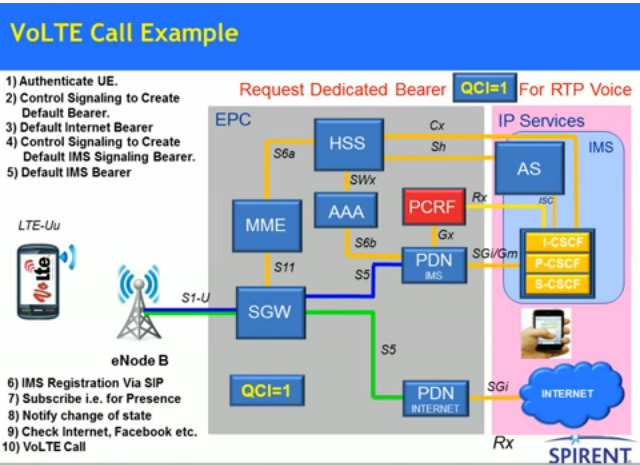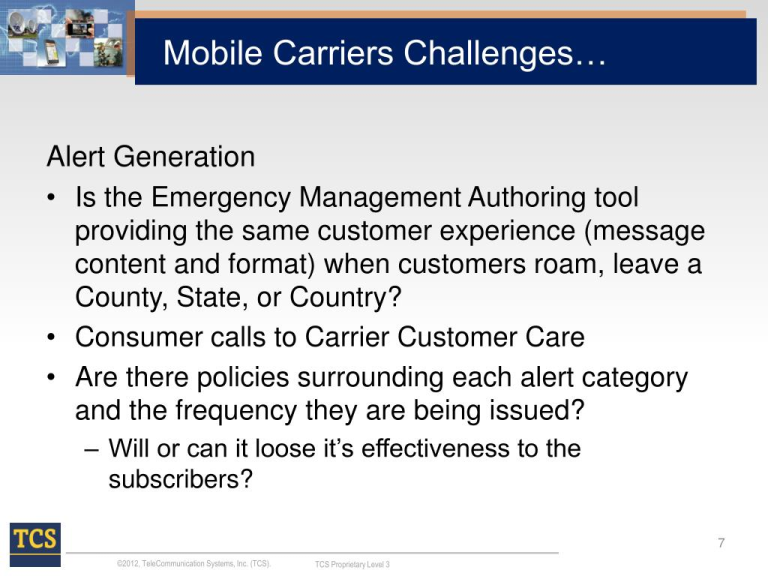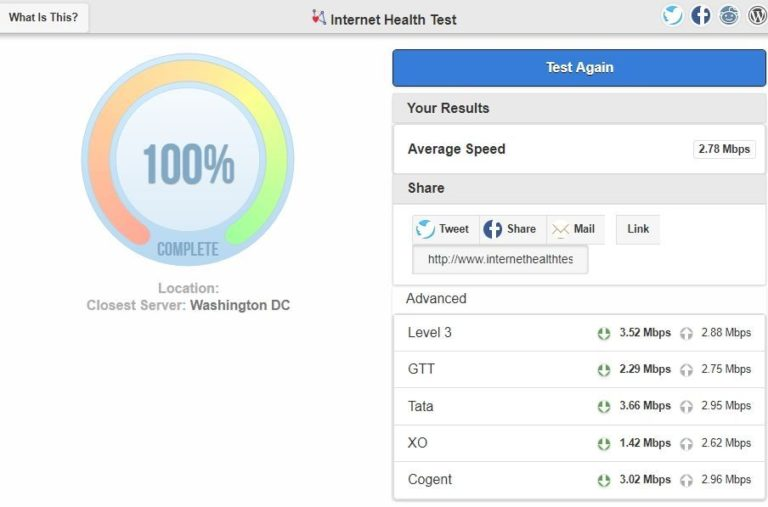
Voice over LTE (VoLTE) is revolutionizing the way we connect and communicate, offering a seamless integration of voice and data services over 4G LTE networks. This advanced VoLTE technology enables high-quality voice calls that are more efficient than traditional methods, allowing users to engage in clear conversations while simultaneously utilizing internet services. The benefits of VoLTE extend beyond just improved call clarity; it enhances overall network efficiency, paving the way for more robust and reliable communication. As VoLTE adoption continues to grow, its potential to transform the telecommunications landscape becomes increasingly apparent. In this rapidly evolving digital age, companies and consumers alike stand to gain from the advancements introduced by VoLTE, ushering in a new era of connectivity and interaction.
Known as LTE voice calling, voice over Long-Term Evolution represents a significant leap forward in mobile communication technology. This innovation supports enhanced voice clarity and simultaneous data transfer, differentiating it from earlier communication methods. The rising trend towards this approach underscores its importance in both consumer and business markets. As enterprises increasingly leverage this technology, its implications for real-time interaction and collaboration become evident. Moreover, the application of LTE broadcast within this framework suggests that we are merely beginning to tap into the expansive capabilities that VoLTE represents.
Understanding Voice over LTE (VoLTE) Technology
Voice over LTE (VoLTE) technology allows carriers to offer high-quality voice calls transmitted over 4G LTE networks rather than traditional circuit-switched networks. Unlike its predecessors, VoLTE enables simultaneous transmission of voice and data, allowing users to download files or stream media uninterrupted while on a voice call. This advancement marks a significant improvement over previous voice communication technologies, providing sharper audio quality and faster call setup times, enhancing the overall user experience.
VoLTE’s unique implementation redefines voice service, aligning it with evolving digital communication standards. This shift not only benefits consumers who enjoy improved call quality but also allows for innovative applications that businesses can leverage, from rich communication services to integrated video calling. Adoption of VoLTE is crucial as it sets the groundwork for future communications technologies, ensuring a smoother transition as users move toward more advanced platforms.
The Benefits of VoLTE for Consumers and Businesses
VoLTE technology presents a myriad of benefits for both consumers and businesses. For consumers, higher call quality with less distortion, faster call setup times, and the ability to use data simultaneously during calls elevate the user experience significantly. Businesses, on the other hand, can take advantage of VoLTE’s capabilities through enhanced communication tools, enabling richer interactions with clients or employees, thereby improving operational efficiency. With its potential to support advanced applications like video conferencing and collaborative platforms, VoLTE enhances your business’s communication strategy.
Moreover, with VoLTE, the reliability of voice calling improves, as it operates over the carrier’s data network, ensuring stronger connectivity and reduced dropped calls. This capability is particularly advantageous for enterprises that require uninterrupted communications for team collaborations or client interactions. It’s imperative for businesses to acknowledge the transition to VoLTE as it not only streamlines operations but also empowers them to provide superior customer service.
The Evolution of VoLTE Adoption in the Telecom Industry
As VoLTE technology has gained momentum, major mobile carriers have begun to adopt and integrate it into their core services. Initially seen as a slow transition, with operators like Verizon and T-Mobile at the forefront of VoLTE implementation, growth rates indicate that millions of users are transitioning to this technology. According to industry projections, VoLTE adoption has the potential to proliferate, with increasing investments from telecom companies focused on improving their service offerings.
The shift to VoLTE represents not only an upgrade of existing voice service but also a commitment from carriers to innovate their networks. As organizations recognize the importance of high-quality voice services, we can expect that investments in VoLTE will increase. This growth is crucial, as it enhances competitive differentiation for carriers while ensuring consumers benefit from a modernized communication infrastructure.
Exploring the Limitations of VoLTE Technology
Despite its many advantages, VoLTE technology is not without its limitations. One major hurdle is that its adoption heavily relies on the availability of robust infrastructure. As many regions still struggle with incomplete coverage of LTE networks, the effectiveness of VoLTE may be compromised, limiting accessibility, particularly in rural areas. Additionally, while the quality of service is generally better with VoLTE, it still may experience issues in areas with poor signal strength.
Another limitation arises from carrier compatibility; not all carriers support VoLTE technology, making interoperability a challenge for users who frequently travel or switch providers. As businesses and consumers continue to rely on seamless communication, it becomes essential for carriers to emphasize network investments and ensure compatibility to foster a more extensive adoption of VoLTE services.
A Look into LTE Broadcast Technology
LTE Broadcast, or LTE Multicast, is an exciting advancement that promises to extend the capabilities of VoLTE by enabling efficient broadcasting of multimedia content to multiple users simultaneously. This technology utilizes a single frequency network (SFN) that can deliver HD video, mobile TV, or digital radio efficiently, especially in high-density environments. By implementing LTE broadcast solutions, carriers can effectively manage network traffic while providing enhanced user experiences.
The application of LTE broadcast technology is particularly noticeable in venues such as stadiums or concerts, where large groups of users can access the same content without straining the network. As the demand for multimedia content continues to skyrocket, LTE broadcast serves as a critical solution for managing widespread content delivery and supporting the increasing consumption of video services. It complements VoLTE by enriching communication options, making it a vital component of future telecom strategies.
Impact of VoLTE on Carrier Wi-Fi Strategies
VoLTE not only revolutionizes mobile voice communication but indirectly impacts the carrier Wi-Fi landscape. With the repurposing of legacy 2G and 3G spectrum for LTE, mobile operators can redirect resources to improve their Wi-Fi services. This turnaround presents an opportunity to enhance business models, ensuring better returns on investment through optimized use of infrastructure and updated technology.
As the industry shifts focus to LTE capabilities, businesses can expect smarter integration of carrier Wi-Fi with LTE services, leading to decreased costs and improved consumer satisfaction. The potential transition of users from traditional Wi-Fi networks to LTE-based solutions will also alleviate pressures faced by carrier infrastructure, paving the way for a more efficient model moving forward.
Innovations and Future Prospects of VoLTE Services
The future of VoLTE lies in its innovation and the potential for enhanced services. As technology advances, the development of virtualized VoLTE platforms has emerged as a promising strategy to cater specifically to enterprise needs. With industry leaders launching cloud-based VoLTE offerings, businesses can access scalable and cost-effective solutions that adapt to their unique requirements, thus optimizing their communications.
Prospects of VoLTE are further bolstered by the growing integration of additional services such as video calling and rich communication services. As demand for more sophisticated communication tools rises, telecom providers will need to focus on expanding their VoLTE capabilities beyond basic voice calls to encompass collaborative and interactive services, propelling businesses and consumers towards a new era of connectivity.
The Role of VoLTE in Enhancing Business Capability
VoLTE plays a significant role in enhancing business capabilities by offering crystal-clear voice communication paired with data services that can transform operational functions. This allows businesses to connect with clients and stakeholders proactively, ensuring timely communication and responsiveness, which are key components of maintaining competitive advantage in today’s fast-paced market.
Additionally, the integration of VoLTE technology facilitates advanced features such as video conferencing, messaging applications, and enterprise communication systems, all within the same framework. This holistic approach enables businesses to streamline interactions, improve productivity, and reduce costs associated with traditional communication methods, establishing a more agile and collaborative working environment.
Challenges Remain for VoLTE Implementation
While VoLTE offers promising advancements in communication technology, its large-scale implementation presents several challenges. A primary concern exists in ensuring consistent service quality as the technology scales across varied geographies and technical environments. Issues such as network congestion and limited infrastructure in certain regions could hinder VoLTE’s seamless operation.
Furthermore, consumer awareness and understanding of VoLTE capabilities remain critical for widespread adoption. As many users may still be unfamiliar with transitioning from traditional voice services, educational initiatives by telecom providers are necessary to highlight the potential benefits of VoLTE. Overcoming these challenges will foster an environment where VoLTE can thrive and deliver its full set of advantages.
Frequently Asked Questions
What are the main benefits of Voice over LTE (VoLTE) for consumers and businesses?
Voice over LTE (VoLTE) offers numerous benefits for both consumers and businesses, including significantly improved call quality, the ability to use voice and data simultaneously, and increased network efficiency. These advantages help decrease dropped calls and enhance the overall user experience.
How does VoLTE technology improve 4G LTE voice calls?
VoLTE technology enhances 4G LTE voice calls by allowing voice traffic to be transmitted over 4G LTE networks rather than relying on legacy 2G or 3G networks. This transition leads to higher quality voice calls and faster call setup times.
Why is VoLTE adoption important for the telecommunications industry?
VoLTE adoption is crucial for the telecommunications industry as it promotes network efficiency and optimizes bandwidth. With growing numbers of VoLTE users, carriers are likely to invest in the necessary infrastructure, paving the way for advanced communication services to flourish.
What is the potential impact of LTE broadcast within VoLTE services?
LTE broadcast, a component of VoLTE services, is expected to have a significant impact by allowing simultaneous content delivery to multiple users. This technology is ideal for streaming multimedia content efficiently to large groups, such as at events or in densely populated areas.
How does VoLTE contribute to reducing network congestion?
VoLTE optimizes network usage by consolidating voice and data traffic over the LTE network. This approach reduces reliance on older technologies, freeing up capacity for data-heavy applications, thus alleviating network congestion.
What advances are being made in VoLTE technology for businesses?
Recent advancements in VoLTE technology for businesses include virtualized VoLTE platforms that enhance communication services. These innovations cater to enterprise needs, allowing organizations to leverage VoLTE capabilities for reliable connectivity and improved communication.
What role does VoLTE play in the evolution of mobile subscriptions?
VoLTE plays a vital role in the evolution of mobile subscriptions as it supports the shift towards higher quality voice services while accommodating the increasing demand for mobile broadband. As more users adopt 4G LTE, VoLTE will likely contribute to a rise in mobile subscription numbers.
How does VoLTE impact video calling services?
With VoLTE, video calling services are significantly enhanced due to higher bandwidth availability, improved call quality, and reduced latency. These benefits facilitate seamless video communication, which is becoming increasingly popular among consumers and businesses alike.
What are the expected trends for VoLTE service revenue?
VoLTE service revenue is forecasted to grow at a compound annual growth rate (CAGR) of 36% through 2020, largely driven by increasing VoLTE subscribers and evolving services like video calling. This growth signifies a lucrative market for both telecommunications providers and enterprise users.
How does VoLTE extend the capabilities of existing LTE networks?
VoLTE extends the capabilities of existing LTE networks by integrating advanced voice services while improving data transmission. This enhancement supports the efficient operation of simultaneous voice and data services, making 4G LTE networks more versatile.
| Key Point | Description |
|---|---|
| Introduction of VoLTE | Apple’s support for VoLTE in devices like the iPhone 6 highlights its capabilities, allowing voice and data streaming simultaneously at high speeds. |
| VoLTE Advantages | Higher call quality, simultaneous voice/data usage, and increased network efficiency are key benefits. |
| Market Growth | VoLTE service revenue is projected to grow at 36% CAGR from 2015-2020, indicating its rising importance. |
| Enterprise Applications | Businesses should leverage VoLTE for enhanced communication services and the emerging virtualized platforms. |
| Technological Advancements | Developments like LTE Broadcast and carrier Wi-Fi integration are anticipated to expand VoLTE’s capabilities. |
Summary
Voice over LTE (VoLTE) represents a significant leap in mobile communication technology, as it improves the quality and efficiency of voice calls by utilizing existing 4G networks. With Apple’s prominent support for VoLTE, it highlights the potential of this technology in delivering superior voice services that integrate seamlessly with data transmission. As VoLTE continues to evolve and gain traction among customers and businesses alike, its capabilities will likely expand, paving the way for enhanced user experiences and innovative applications that cater to both consumer and enterprise needs.


